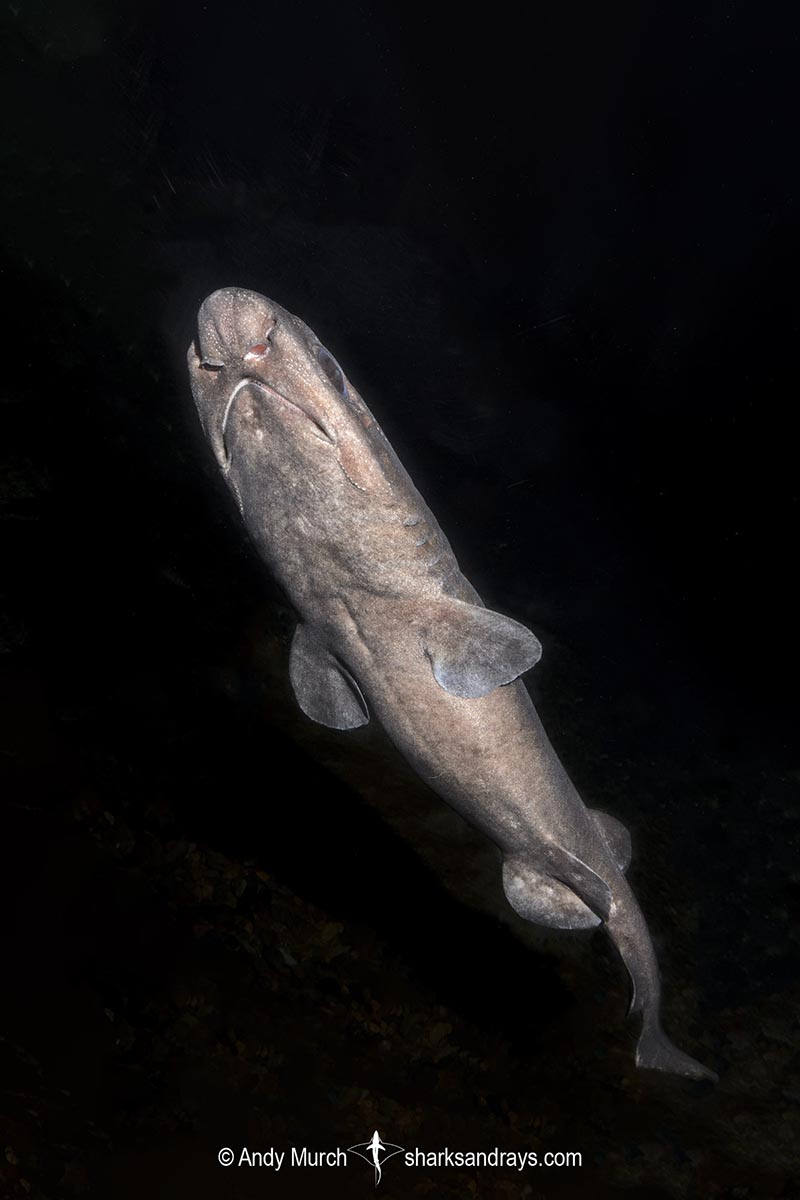Common names
Filetail Catshark.
Binomial
Parmaturus xaniurus.
Synonyms
Catulus xaniurus.
Identification
A small catshark with a short, rounded snout. Mouth wider than snout length. Eyes large and bluish-green when reflecting light. First dorsal origin slightly posterior to pelvic fin origin. Second dorsal origin posterior to anal fin origin. First and second dorsal fins of roughly equal size, with rounded apexes and straight posterior margins. Pectoral fins small. Pelvic and anal fins of roughly equal size; larger than dorsal fins. Lower caudal lobe has a defined apex. Dorsal coloration brown or grey brown with no obvious markings. Fins may have dusky tips.
Size
Maxium size 61cm. Males mature at 37-45cm. Females mature at 47-55cm.

Conservation Status
LEAST CONCERN
The filetail catshark appears to be relatively abundant off the west coast of North America. It is not targeted by commercial fisheries or utilized for human consumption, but it is a bycatch component in longline and bottom trawl fisheries. Post release survivorship is unknown.

Habitat
Adults are epibenthic and found near areas of rocky vertical relief over soft mud bottoms on the outer continental shelf and upper slope at depths of 91 to 1,251 m, juveniles are mesopelagic, found around 500 m off the bottom in waters over 1,000 m deep.
Distribution
The filetail catshark is found in the northeastern Pacific, from Washington State to Baja California and throughout the Sea of Cortez.
Reproduction
An oviparous species, laying eggcases throughout the year. More egg cases are deposited during July through September.
Diet
Feeds on pelagic crustaceans and small bony fishes. Pelagic squat lobsters (Pleuroncodes planipes) are heavily targeted.
Behavior
Filetail catsharks are found on the substrate and hundreds of meters about the sea floor where they hunt for their pelagic prey. Will explore anoxic areas in search of food.
Reaction to divers
Rarely (if ever) seen by divers. Likely shy due to its small size.
Diving logistics
The minimum recorded depth of the filetail catshark is 90m, so it is unlikely that even tech divers will run into this species in the wild.
It is a long shot, but it may be possible for tech divers to see this species during the seasonal migration of pelagic squat lobsters in California, as these free-swimming crustaceans are the filetail catshark’s favorite prey. I have seen the decapod migration at approximately 40m depth off Catalina Island in August, but to be successful, divers would have to descend significantly deeper.
Similar species
Brown Catshark Distinguished by longer, more laterally depressed snout, smaller eyes, and much longer anal fin.




